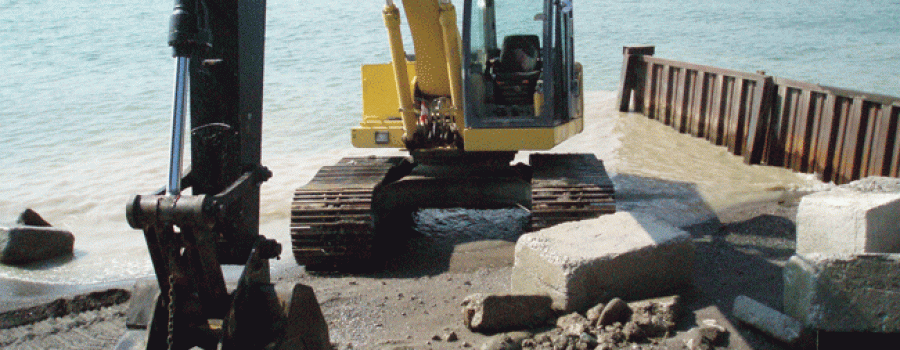LTVCA Watershed – A healthy environment is key to healthy and vibrant communities. To maintain the vitality of our watersheds and to prevent loss of life and property due to natural hazards such as flooding and erosion, Ontario’s 36 Conservation Authorities are charged with administering Regulations under the Conservation Authorities Act, R.S.O. 1990, c. C.27.
The recent conviction of a West Lorne area landowner and drainage contractor for violations of Regulations under the Conservation Authorities Act, has generated numerous inquiries of the Lower Thames Valley Conservation Authority (LTVCA) from the public regarding wetland protection and agricultural land drainage. This case involved the clearing of wetland area to create additional agricultural land as well as the installation of field tile adjacent to the wetland within a distance specified in the regulation. While the regulation does not prevent the continuation of normal farming activities on existing agricultural land bordering a wetland, attempting to claim additional agricultural land from the wetland, even “squaring up” of the field, is an activity that requires permission from the Conservation Authority. The installation of agricultural field tile adjoining a wetland is also a regulated activity but in most cases can be approved by the Conservation Authority as long as it is properly designed so as not to impact the wetland. Other activities within the wetland or neighbouring lands such as land regrading or the placement of fill, also require permission of the Conservation Authority.
Violations of the legislation can be costly. While there are no stop work orders under the legislation, additional charges can be laid for each day the work continues or the development remains in place. The maximum fines are $10,000 per charge. The court can also order the development removed or the wetland/watercourse rehabilitated. There is no dollar value cap on such rehabilitations which can often cost far more than the set fines or even the development themselves. In the case of the West Lorne conviction, the defendant was fined $5,000 for each of three charges, ordered to remove the field tile he had installed, and to rehabilitate those portions of the wetland that he had destroyed.
Background on the Act and Regulations:
In 2006, the Minister of Natural Resources approved the Development, Interference with Wetlands and Alterations to Shorelines and Watercourses Regulations for all Conservation Authorities (Ontario Regulations 42/06 and 146/06 to 182/06). Through these updated regulations, Conservation Authorities are empowered to regulate development and activities in or adjacent to river or stream valleys, Great Lakes’ and large inland lakes’ shorelines, watercourses, hazardous lands and wetlands.
This “second generation” of regulations replace the previous “Fill, Construction and Alteration to Waterways Regulations” administered by all Conservation Authorities, in some cases since the mid-1950s. Ontario Regulation 97/04 expanded upon the previous regulations’ responsibilities and specified the content for the current regulations ensuring conformity of wording across all Conservation Authorities and complementing provincial hazard lands and wetlands policies administered by municipalities under the Planning Act. Development taking place on regulated lands requires permission from the Conservation Authority to confirm that the control of flooding, erosion, dynamic beaches, pollution or the conservation of land are not affected. The straightening, changing, diverting or interfering in any way with the existing channel of a river, creek, stream, or watercourse (which includes agricultural drains) is also regulated as is changing or interfering in any way with a wetland.
What Areas Are Regulated?
-river or stream valleys including their flood prone areas as well as allowances for a stable bank slope and 100 year’s worth of erosion
-Great Lakes and large inland lakes shorelines, including their dynamic beaches, wave uprush zones, flood prone areas, and allowances for a stable bank slope and 100 year’s worth of shoreline erosion
-watercourses of any kind including agricultural and municipal drains
-wetlands including adjacent lands within 120 metres of all Provincially Significant Wetlands and 30 of all other wetlands
-other hazardous lands
What Activities Are Regulated?
-interference of any kind with a wetland
-interference of any kind with a watercourse
-development which is defined as:
-construction, reconstruction, erection or placing of a building or structure of any kind
-any change to a building or structure that would have the effect of altering the use or potential use of the building or structure, increasing the size of the building or structure or increasing the number of dwelling units in the building or structure
-site grading
-temporary placing, dumping or removal of any material, originating elsewhere or on the site
Typical activities that may be regulated include, but are not limited to:
-construction of all buildings and additions including modification or reconstruction of foundations which support existing buildings
-construction and major repairs of stairs, decks, gazebos
-construction and major repairs of in-ground and above-ground pools
-constructions and major repairs on retaining walls
-construction and repairs of breakwalls, revetments, rubble, groynes, jetties, etc.
-sand dune removal or grading
-construction and major repairs of docks, boat ramps, boat storage structures
-dredging
-temporary or permanent placement of fill, grading, removal of fill, or other site alteration
-placement of trailers and mobile homes
-construction or major repairs on bridges, crossings, roads and pipelines
-work on watercourses including municipal and agricultural drains
Section 28(25) of the Conservation Authorities Act The Conservation Authorities Act and associated Regulations can be found at : www.e-laws.gov.on.ca.
For Further Information Contact:
Jason Wintermute
Water Management Supervisor
519-354-7310 ext.227
Email [email protected]
Lower Thames Valley Conservation Authority, 100 Thames St., Chatham, On N7L 2Y8

